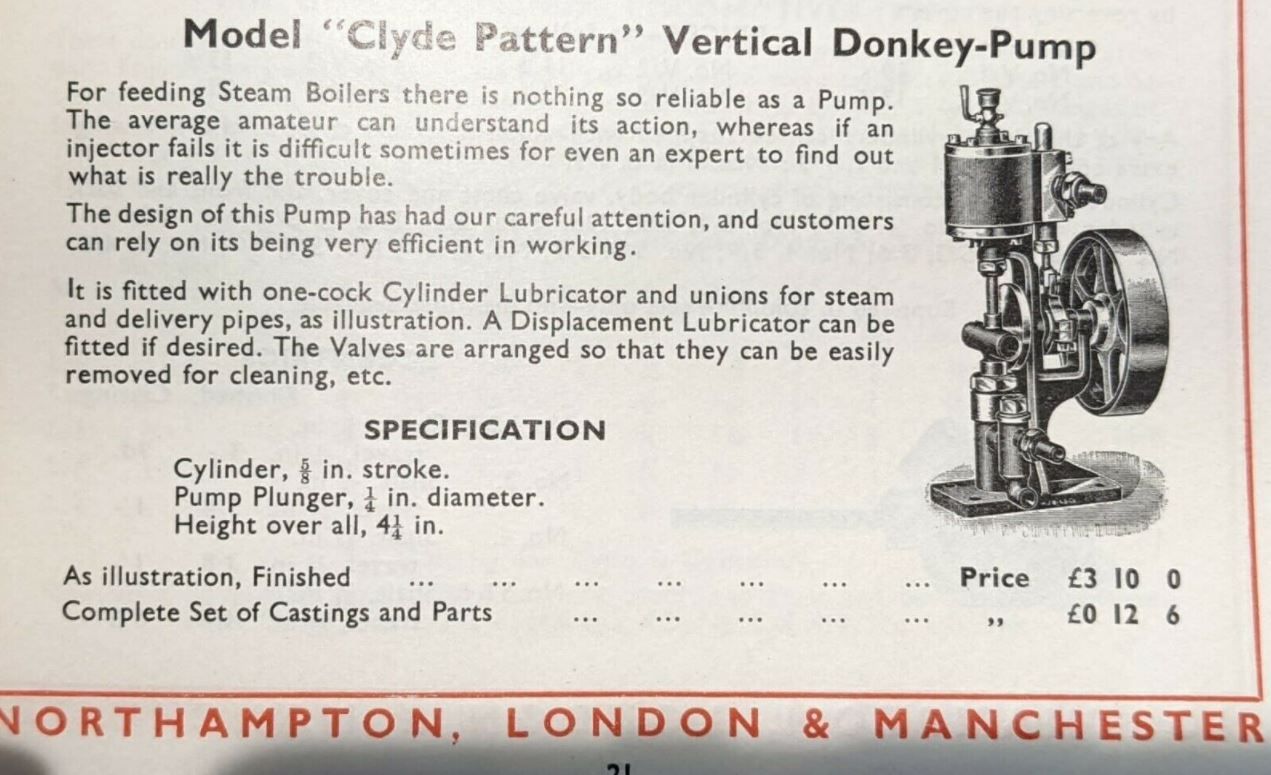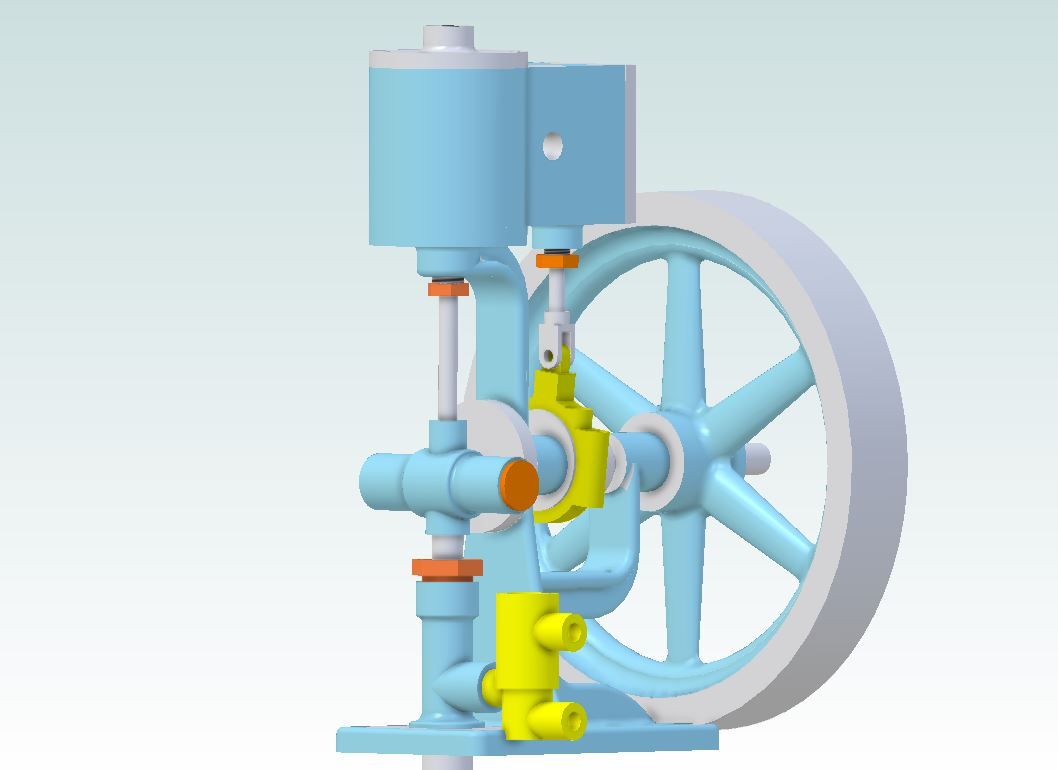As I showed some of the design stages of this engine that I have just finished in the "3D cad Sequence" thread I thought I should post a couple of images and a video here
I first saw one of these engines on e-bay 3-4 years ago, liked the look of it so copied the images to my "Future Projects" file though I did not know exactly what it was. Over the years a couple more have cropped up on the same site and one of those included a copy of a page from an early Bassett-Lowke catalogue which gave a couple of sizes as well as a description

Using one of the photos that had a reasonably square on side shot I imported the image into Alibre and scaled it to suit. I could then take sizes off of that to produce a replica, this time in metric and I kept it about the same size with a 16mm bore and 15mm stroke.

It was done using a mixture of silver soldered fabrications and cutting from solid. Mostly on the manual machines though I did use the CNC to cut a couple of parts that form the frame and also do the flywheel from a slice of 80mm CI bar.
It's the first engine I've done with a Scotch Yoke so that's another notch on the workshop door frame. Seems to run quite well on a few psi and even pumps though I think some house training is in order.
I first saw one of these engines on e-bay 3-4 years ago, liked the look of it so copied the images to my "Future Projects" file though I did not know exactly what it was. Over the years a couple more have cropped up on the same site and one of those included a copy of a page from an early Bassett-Lowke catalogue which gave a couple of sizes as well as a description

Using one of the photos that had a reasonably square on side shot I imported the image into Alibre and scaled it to suit. I could then take sizes off of that to produce a replica, this time in metric and I kept it about the same size with a 16mm bore and 15mm stroke.

It was done using a mixture of silver soldered fabrications and cutting from solid. Mostly on the manual machines though I did use the CNC to cut a couple of parts that form the frame and also do the flywheel from a slice of 80mm CI bar.
It's the first engine I've done with a Scotch Yoke so that's another notch on the workshop door frame. Seems to run quite well on a few psi and even pumps though I think some house training is in order.




